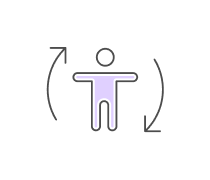When the intake of nitrogen is less than the output of nitrogen, the...
Ammonia is detoxified to urea via the __ cycle in the...
____ ____ are used for the synthesis of nitrogenous compounds like...
Amino acids undergo catabolism to form _____ that is detoxified to...
___ is the major end-product of nitrogen metabolism (Lecture 63,...
In a healthy adult, tissue protein levels remain ____, approximately...
The ____ degrades extracellular proteins, like plasma proteins and...
The ____ is non-energy dependent (Lecture 63, p. 2).
There is increased tissue protein synthesis in _____ nitrogen...
There is increased muscle proteolysis and loss of tissue protein in...
Liver is the site where most of the amino acids release their amino...
When the input of dietary nitrogen equals the output of nitrogen in...
____ is observed when the diet is deficient in protein or any of the...
____ is seen in starvation, chronic illness (infections), cancer, and...
Growth periods during childhood and adolescence as well as pregnancy...
____ proteins are the major source of amino acids for the amino acid...
The ____ pathway is ATP dependant (Lecture 63, p. 2).
There is a higher amount of tissue protein catabolism in states of...
When intake of dietary nitrogen is greater than the output of...
The rate of tissue protein ____ is equal to the rate of protein...
Damaged or unneeded endogenous, intracellular proteins are degraded by...
Which of the following statements is true? (Lecture 63, p. 3).
There is an increase in urinary excretion of urea in states of...
The carbon skeletons of the amino acids are used for...
Hartnup's disease is characterized by an inherited defect in the...
____ proteins are constantly being catabolized - approximately 400...
In infection, the liver synthesizes a group of proteins known as the...
In a healthy, well-fed adult, the input of amino acids is equal to the...
_____ is characterized by decreased tubular reabsorption of cystine,...
Along with the inflammatory mediators, ____ is the major hormonal...

















